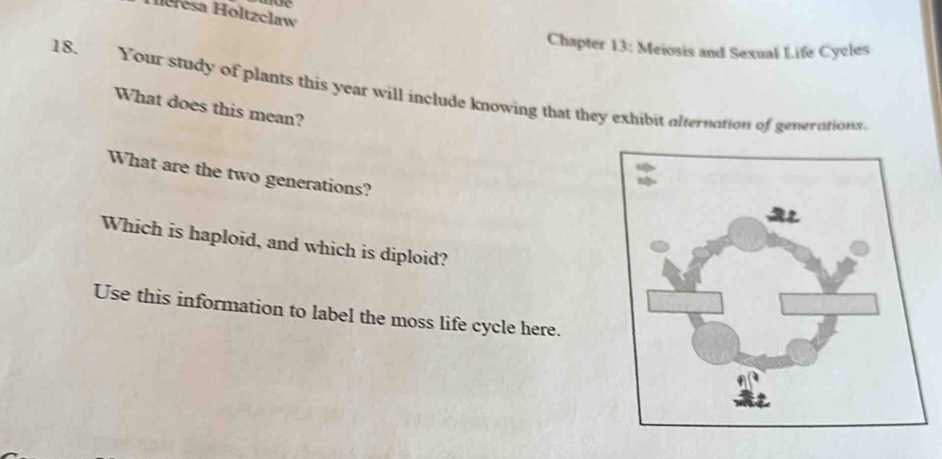
In this section, we explore the fundamental processes that govern how organisms reproduce and pass on genetic information. These mechanisms are crucial for the continuity of species and contribute to the genetic diversity observed across generations.
Through a series of well-coordinated stages, the genetic material is distributed in a way that ensures the next generation receives a unique combination of traits. This process not only ensures reproduction but also plays a key role in the evolution and adaptation of species over time.
Genetic recombination during reproduction introduces variations that are essential for the survival of organisms in changing environments. Understanding these processes helps clarify how organisms maintain stability and diversity within their populations.
Overview of Meiosis
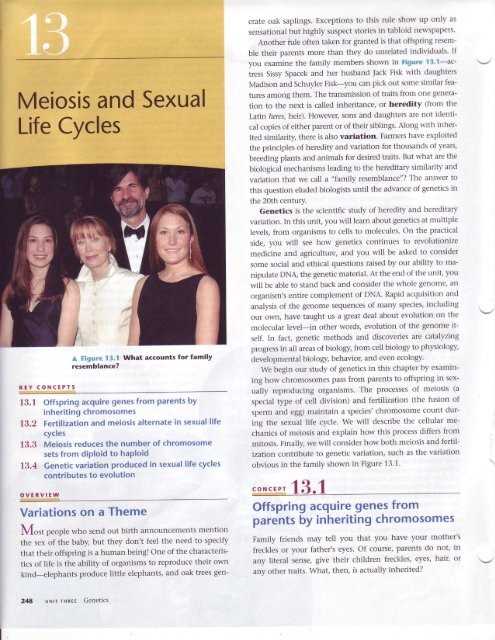
The process that facilitates the formation of reproductive cells involves a series of highly organized steps, ensuring that offspring inherit a mix of genetic material from both parents. This process is essential for maintaining genetic variation, which is crucial for the adaptability and evolution of species.
In order to produce these specialized cells, the genetic material undergoes division, reducing the chromosome number by half. This ensures that when fertilization occurs, the resulting offspring will have the correct number of chromosomes, preserving the stability of the organism’s genetic makeup across generations.
| Phase | Key Events |
|---|---|
| Prophase | Chromosomes condense and homologous pairs form. |
| Metaphase | Chromosomes align at the cell center. |
| Anaphase | Homologous chromosomes separate to opposite poles. |
| Telophase | New nuclei form around separated chromosomes. |
This division process is followed by a second set of steps that ensure the final product is a cell with only half the original number of chromosomes, setting the stage for successful reproduction and genetic variety. The correct distribution of chromosomes during these phases is critical for the organism’s development and survival.
Understanding Meiosis and Sexual Reproduction
Reproductive processes are central to the continuation of species, enabling organisms to pass on their genetic material to the next generation. This method of reproduction ensures diversity within populations, which is crucial for survival in dynamic environments.
In these processes, specialized cells are formed that carry half the genetic information of the parent organisms. When these cells merge during fertilization, they create a new individual with a complete set of chromosomes, preserving the species’ genetic stability while introducing new combinations of traits.
- Genetic Diversity: Variations in offspring result from the recombination of genes, providing the potential for adaptation and evolutionary changes.
- Formation of Reproductive Cells: Specialized cells are created through a division process that reduces chromosome number, ensuring the maintenance of a stable genome.
- Fertilization: The fusion of these cells restores the original chromosome number and initiates the development of a new organism.
The process is finely tuned, with precise mechanisms ensuring that the genetic material is distributed accurately. Without these mechanisms, the organism would be at risk of genetic abnormalities, making accurate reproduction essential for the survival of species.
Stages of Meiosis Explained
The process that leads to the formation of reproductive cells is a complex sequence of events, each of which plays a crucial role in ensuring that the resulting cells carry the correct number of chromosomes. This division process occurs in two main phases, with multiple stages within each phase, ensuring accurate genetic distribution.
First Division
The initial division involves the separation of homologous chromosomes, each consisting of two sister chromatids. This phase ensures that the chromosome number is halved, setting the stage for the formation of specialized cells with half the genetic content of the parent organism.
Second Division
The second division follows a similar sequence but focuses on separating the sister chromatids rather than the homologous chromosomes. This final separation ensures that each cell receives one copy of each chromosome, resulting in four genetically unique reproductive cells.
Role of Gametes in Life Cycles
Reproductive cells play a central role in the continuation of species, ensuring genetic material is passed from one generation to the next. These cells are essential for producing offspring with a mix of traits from both parents, contributing to the genetic diversity of populations.
Each reproductive cell carries only half of the genetic information required to form a complete organism. Upon fusion during fertilization, they restore the full set of chromosomes, creating a new individual with a unique genetic combination.
- Genetic Variation: By combining genetic material from two individuals, gametes introduce variability, which is crucial for adaptation to changing environments.
- Chromosome Number Maintenance: Gametes ensure that the chromosome number remains stable across generations by halving the genetic content, allowing fertilization to restore balance.
- Species Continuity: Gametes enable reproduction, providing a mechanism for organisms to create offspring and maintain the species across generations.
Thus, gametes are not only vital for the formation of new individuals but also for maintaining the health, diversity, and evolution of populations over time.
Key Differences Between Mitosis and Meiosis
While both processes are essential for cellular division, they serve distinct purposes in the organism’s life cycle. One leads to the production of identical cells for growth and repair, while the other creates specialized cells involved in reproduction. Understanding the differences between these two types of cell division is fundamental to grasping how genetic material is inherited and how organisms develop.
Purpose and Outcome
The main difference between the two processes lies in their purpose. The first type of division is responsible for producing cells that are genetically identical to the parent cell, contributing to growth, repair, and asexual reproduction. In contrast, the second process produces reproductive cells with half the number of chromosomes, ensuring genetic diversity when offspring are formed.
Stages and Results
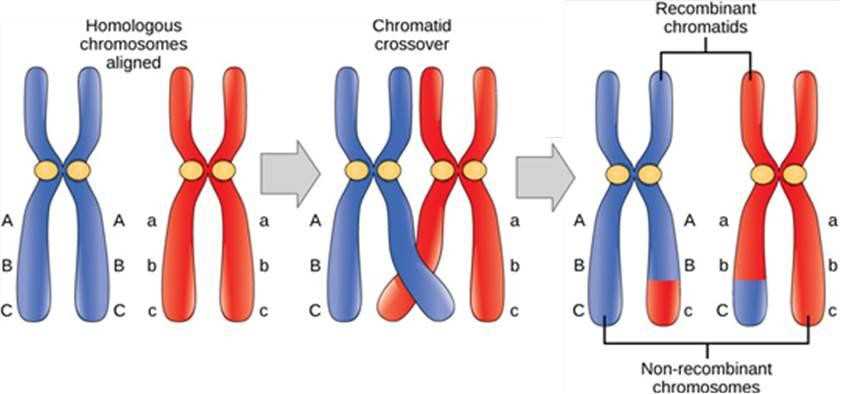
Another significant distinction is the number of divisions and the genetic material involved. In the first process, one division occurs, resulting in two identical cells. The second process, however, involves two rounds of division, leading to four non-identical cells, each with half the chromosome number of the original cell.
Meiosis I vs Meiosis II
Though both stages are integral to the process of cell division, they differ significantly in their functions and outcomes. The first stage focuses on reducing the chromosome number, while the second is primarily concerned with separating the genetic material in preparation for the creation of reproductive cells.
First Division: Reducing Chromosome Number
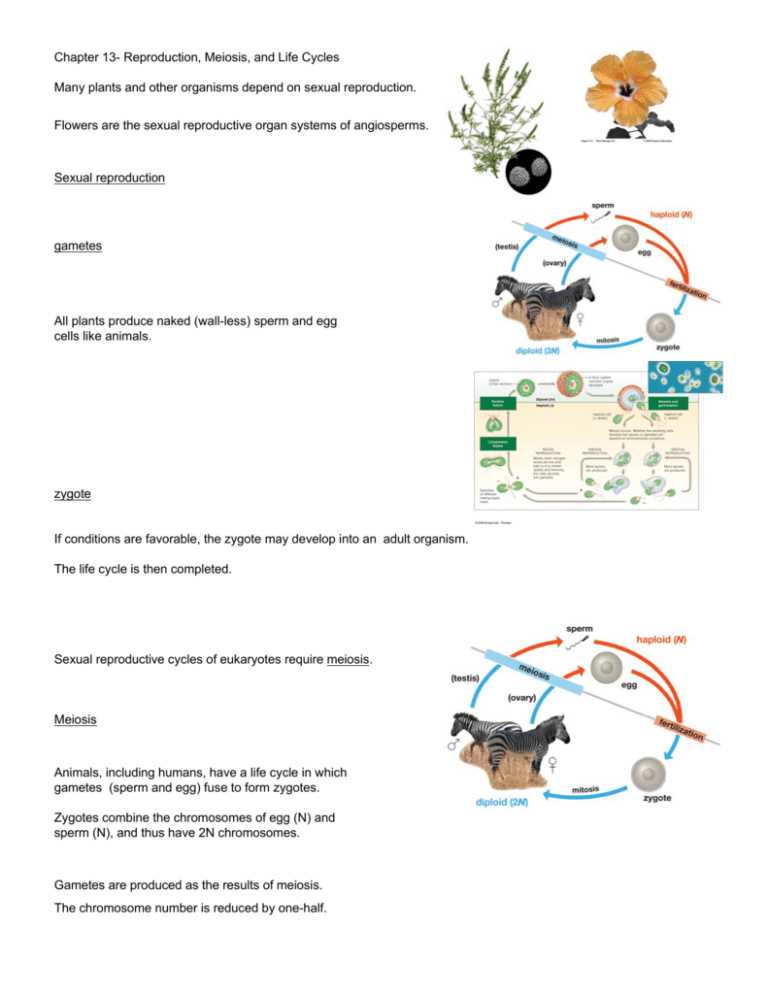
The primary goal of the first division is to halve the chromosome number. During this phase, homologous chromosomes, each consisting of two sister chromatids, are separated into different cells. This reduction is crucial because it ensures that the resulting cells have only one copy of each chromosome, setting the stage for successful fertilization.
Second Division: Separation of Chromatids
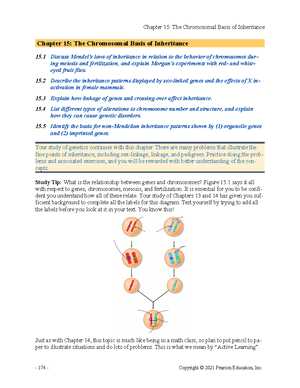
The second division closely resembles a typical cellular division, but with one key difference: the cells produced in the first stage are already haploid. In this phase, the sister chromatids are separated into individual cells. Unlike the first division, there is no chromosome reduction in this stage, only the separation of chromatids to form four unique cells.
Key Difference: The first division reduces the chromosome number, while the second ensures that each cell receives one chromatid from each chromosome pair.
Crossing Over and Genetic Diversity
One of the key mechanisms that contribute to genetic variation within populations is the exchange of genetic material between homologous chromosomes. This process introduces new combinations of traits, which play a vital role in the adaptability of organisms to changing environments.
During the exchange, segments of chromosomes are swapped between paired chromatids. This results in offspring having unique genetic profiles, distinct from those of their parents. This genetic reshuffling is critical for ensuring that no two individuals, except identical twins, are genetically identical, even within the same species.
The introduction of new combinations of alleles enhances genetic diversity, which is essential for evolutionary processes. Populations with higher genetic variability are more likely to survive environmental pressures, as they have a wider range of traits that may be beneficial under different conditions.
How Meiosis Contributes to Heredity
The process of forming reproductive cells is essential for passing genetic information from one generation to the next. It ensures that offspring inherit a unique combination of traits from both parents, contributing to genetic diversity. This process also maintains the stability of an organism’s genetic makeup by accurately halving the chromosome number.
Genetic Recombination and Inheritance
During the formation of reproductive cells, genetic recombination occurs when chromosomes exchange segments of genetic material. This creates new combinations of alleles, which are inherited by the offspring. These inherited traits are the foundation of heredity, passed down through generations, contributing to both the resemblance and variation observed in offspring.
Ensuring Genetic Stability

While genetic variation is crucial, maintaining a stable genome across generations is equally important. By reducing the chromosome number in reproductive cells, the process ensures that when fertilization occurs, the chromosome number is restored to its original state. This precise mechanism helps prevent genetic disorders and maintains the continuity of the species’ genetic information over time.
Sexual Life Cycles in Different Organisms
The way organisms reproduce and pass on genetic material varies widely across species, with each group having adapted different methods for producing offspring. These variations in reproductive strategies reflect the diversity of life forms and the ways in which genetic material is transmitted from one generation to the next.
Types of Reproductive Strategies
- Diploid-Dominant: In many animals, including humans, the majority of the organism’s life cycle is spent in a diploid state, where cells contain two sets of chromosomes. Only the reproductive cells are haploid, ensuring the return to the diploid state after fertilization.
- Haploid-Dominant: In certain fungi and algae, the life cycle is dominated by the haploid phase. The organism exists primarily in a haploid state, with fertilization temporarily restoring the diploid condition.
- Alternation of Generations: Some plants and many algae exhibit a life cycle that alternates between haploid and diploid stages. Both the haploid gametophyte and diploid sporophyte stages are multicellular and contribute to the organism’s overall reproduction strategy.
Variation Across Organisms
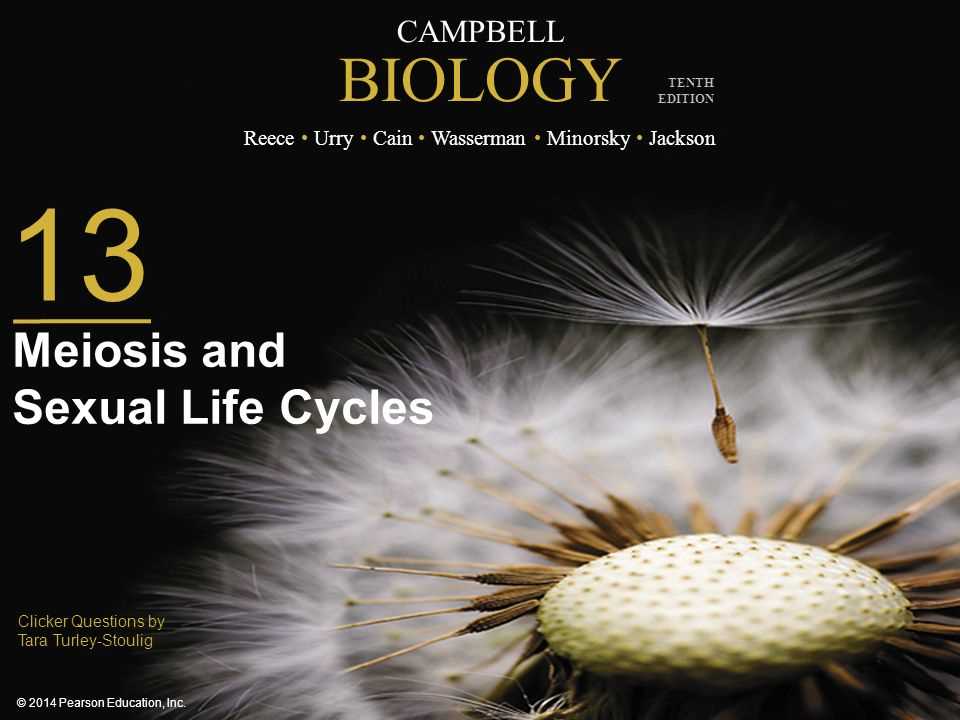
Each organism’s reproductive cycle is tailored to its environment and survival needs. In animals, the focus is often on a single, highly specialized form of reproduction, while in plants and fungi, reproduction can be more variable, incorporating different methods depending on the organism’s stage of development and environmental conditions.
- Animals: Most animals follow a diploid-dominant cycle, with the primary focus on producing haploid gametes for fertilization.
- Plants: Plants may alternate between diploid and haploid stages, with some species engaging in both sexual and asexual reproduction depending on the conditions.
- Fungi: Many fungi spend much of their lifecycle in the haploid state, only briefly transitioning to diploid for reproduction.
These varied strategies show how organisms have evolved to optimize reproduction and ensure the survival of their species in diverse environments.
Importance of Random Fertilization
Random fertilization is a crucial process that contributes to genetic diversity in populations. It ensures that each new individual has a unique combination of genetic material, which is vital for evolution and adaptation to changing environments. By shuffling genetic traits from both parents, this mechanism plays a fundamental role in maintaining variation within a species.
During reproduction, the fusion of two haploid gametes–each carrying a unique set of genetic information–results in a genetically distinct offspring. This randomness not only allows for a broad range of genetic combinations but also increases the likelihood that some individuals will possess traits that may confer an advantage under specific environmental conditions.
Moreover, random fertilization helps reduce the risks of genetic disorders that can arise from inbreeding or limited genetic variation. It ensures that the gene pool remains robust and diverse, allowing populations to thrive and evolve over time.
Chromosome Number and Zygote Formation
The process of fertilization plays a key role in maintaining the stability of an organism’s chromosome number. By combining two haploid gametes, one from each parent, the resulting zygote contains a complete set of chromosomes. This ensures that the offspring inherit the correct number of chromosomes, which is crucial for proper development and function.
Maintaining Chromosomal Stability
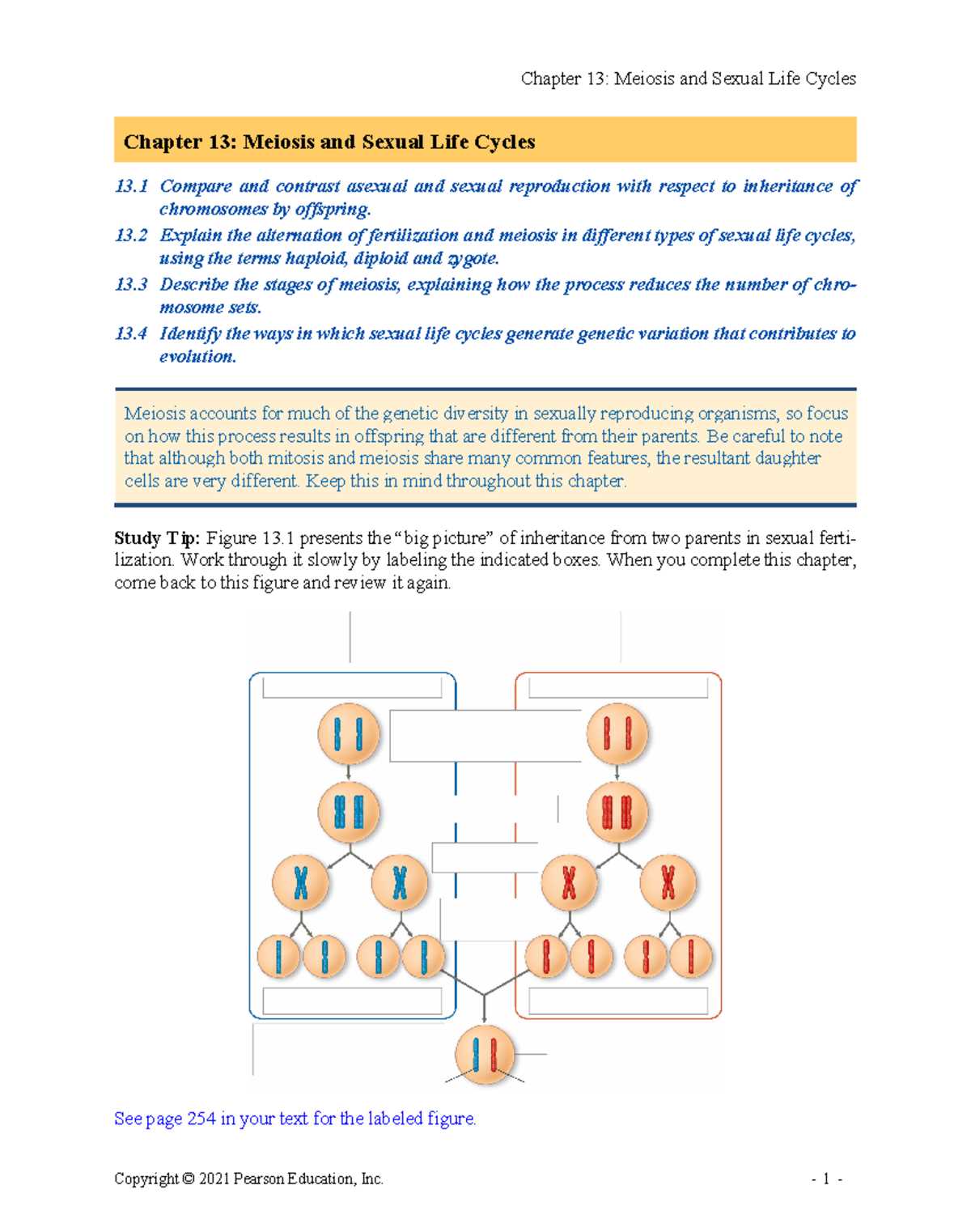
When reproductive cells fuse during fertilization, each gamete contributes half of the organism’s genetic material. This halving of chromosome numbers is essential for preventing a doubling of chromosomes with each new generation. As a result, the zygote formed after fertilization restores the diploid number of chromosomes, which will be maintained in subsequent cell divisions.
The Role of the Zygote
The zygote, formed by the union of two gametes, serves as the first stage of the new organism’s development. It contains a full set of chromosomes, which directs the growth and differentiation of the cells. This genetic material will guide the organism through its various stages of development, ensuring it inherits traits from both parents.
Meiosis and Genetic Variation in Populations
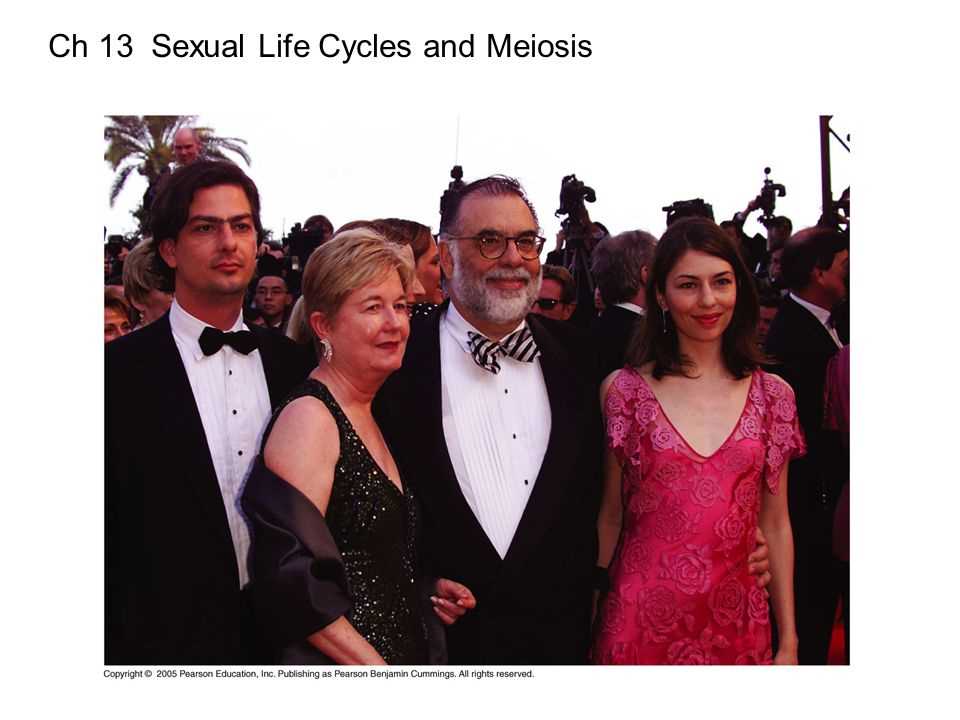
The process of cell division plays a critical role in shaping the genetic diversity within populations. By producing gametes with different combinations of genetic material, it creates new genetic combinations in offspring. This variation is fundamental for evolution, as it allows populations to adapt to changing environments over generations.
Through the random assortment of chromosomes and the exchange of genetic material between homologous chromosomes, organisms produce genetically unique offspring. These variations in genetic makeup increase the likelihood that some individuals will possess beneficial traits, which can improve survival rates and reproductive success.
Furthermore, genetic diversity helps populations cope with environmental stresses, diseases, and other challenges. By maintaining a broad genetic pool, species are more likely to have individuals with traits that can withstand new threats, ensuring the long-term survival of the population.
Regulation of Meiotic Division
The process of cellular division is tightly controlled to ensure the proper distribution of genetic material. Regulatory mechanisms guide each phase, ensuring that the division occurs at the correct time and with precision. These checks and balances are essential for the accurate formation of reproductive cells and the maintenance of genetic stability across generations.
Key Regulatory Proteins
Several proteins act as key regulators during the division process. Cyclins and cyclin-dependent kinases (CDKs) play a critical role in driving the division process forward. They regulate the progression through various stages, ensuring that each phase of the process is completed before the next one begins. The timing and activation of these proteins are crucial for successful division.
Checkpoint Mechanisms
Checkpoint mechanisms are in place to monitor the integrity of genetic material during division. If errors or damages are detected, checkpoints halt the process to allow for repairs. This ensures that gametes with abnormal chromosome numbers are not produced, which could otherwise lead to developmental issues or reduced viability in offspring.
Errors in Meiosis and Genetic Disorders
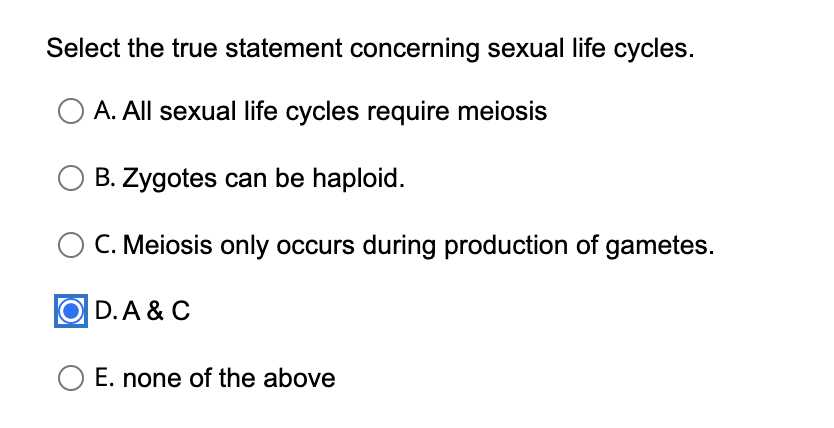
During the process of cell division, errors can occur that lead to abnormalities in the number or structure of chromosomes. These mistakes can have significant effects on the genetic makeup of offspring, sometimes resulting in genetic disorders. Understanding the types of errors that can happen and their consequences is essential for understanding the genetic basis of various conditions.
Types of Errors in Division
There are several types of errors that can occur during the process, leading to changes in the number or structure of chromosomes:
- Non-disjunction: This occurs when chromosomes fail to separate properly, leading to cells with too many or too few chromosomes.
- Chromosomal Rearrangements: Structural changes in chromosomes, such as deletions, duplications, inversions, or translocations, can lead to genetic imbalances.
Common Genetic Disorders Caused by Errors
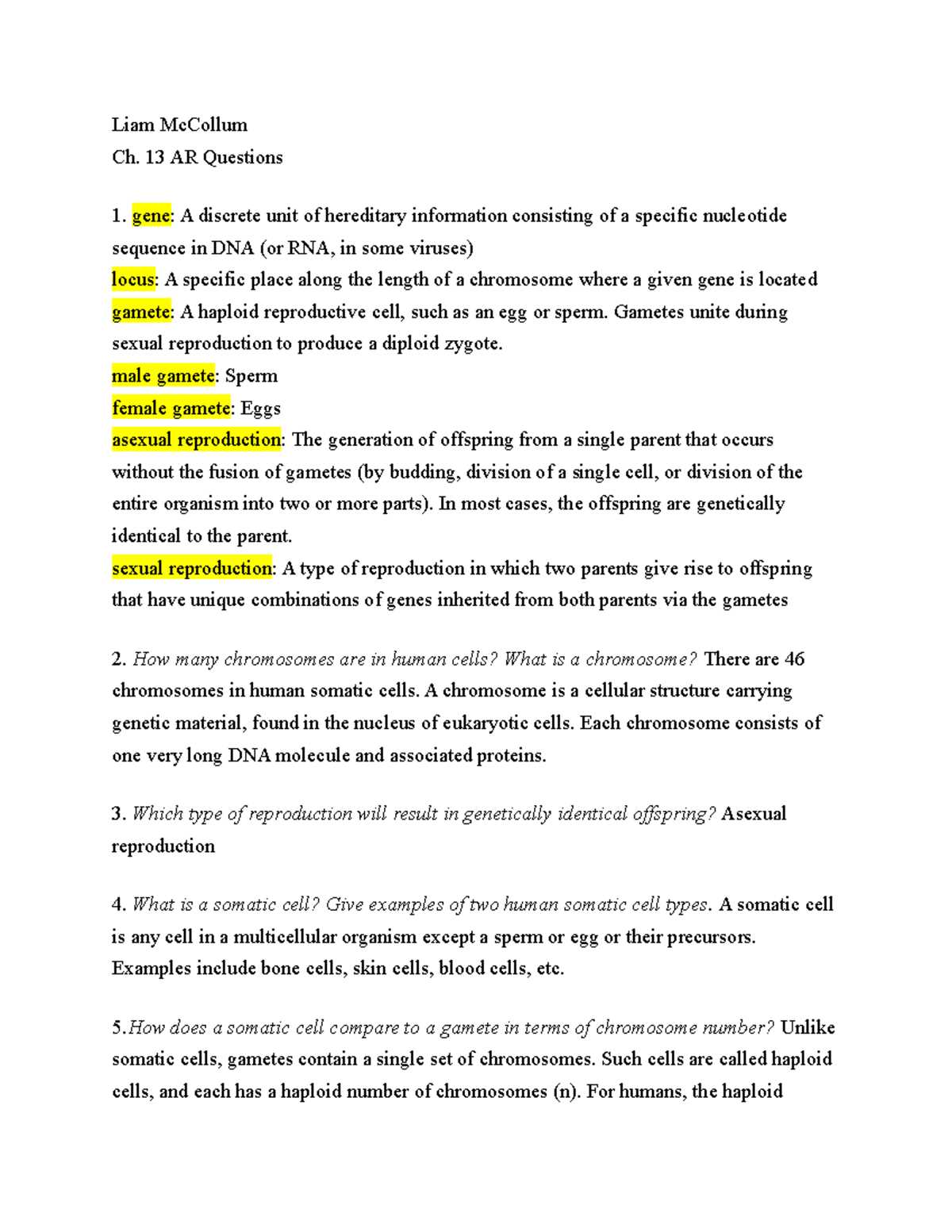
Errors in chromosome number or structure can lead to several well-known genetic disorders. Some of the most common include:
- Down Syndrome: Caused by an extra copy of chromosome 21, resulting in intellectual disability and developmental delays.
- Turner Syndrome: A condition where females are born with only one X chromosome, leading to short stature and infertility.
- Klinefelter Syndrome: Males with an extra X chromosome, which can result in infertility and some physical traits like enlarged breasts.
These disorders highlight the importance of accurate chromosome division and the potential consequences when errors occur. Advances in genetics continue to improve our understanding of these conditions and provide insights into possible treatments and interventions.
Implications of Meiosis for Evolutionary Biology
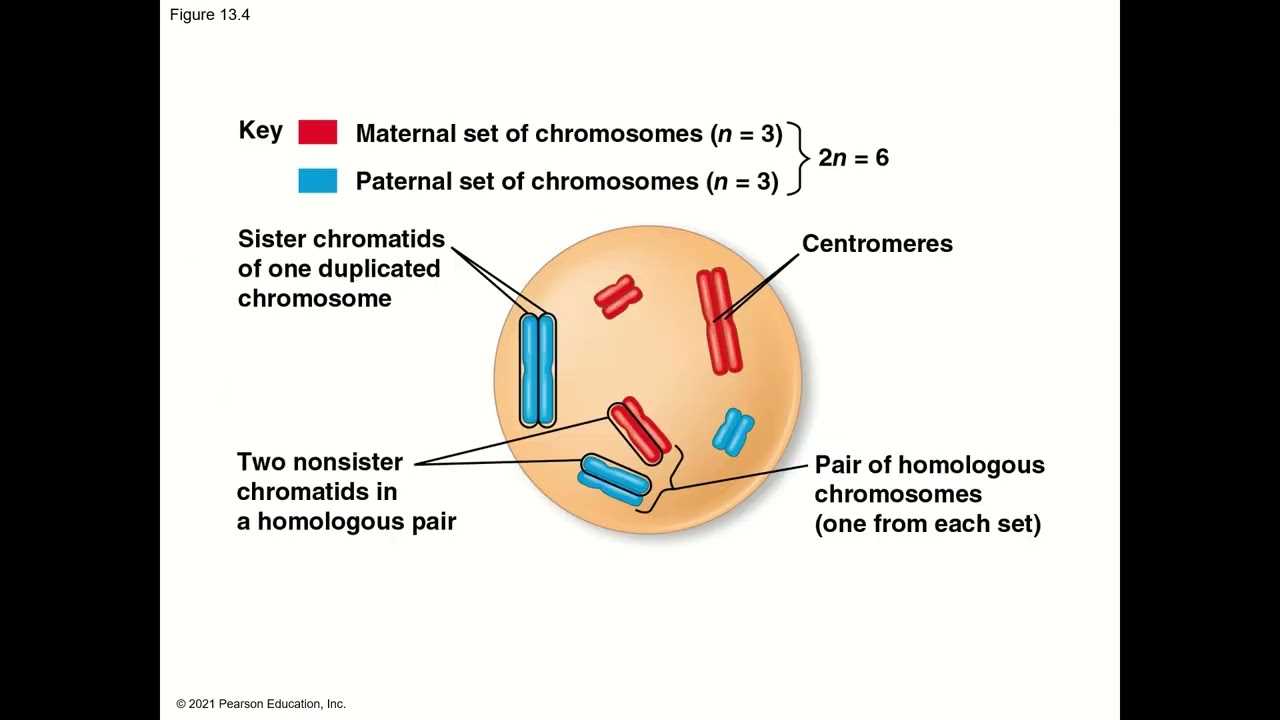
The process of cellular division plays a crucial role in shaping the genetic diversity within populations, which is fundamental for the adaptation and evolution of species. By generating genetic variation, this division mechanism contributes to the potential for natural selection to act on populations over generations. These variations are the raw material for evolution, influencing traits that enhance survival and reproduction.
Genetic Variation and Evolution
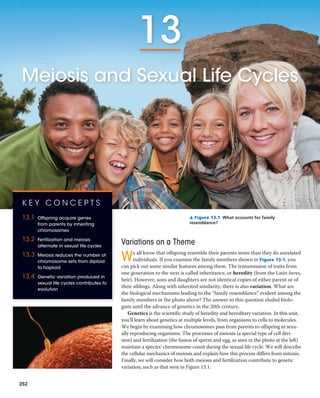
The generation of genetic diversity through recombination and random assortment is central to evolutionary processes. This variation provides the foundation for natural selection, as individuals with beneficial traits are more likely to survive and reproduce, passing on their genes to the next generation. The continuous cycle of genetic variation and selection drives the adaptation of populations to changing environments.
Impact on Species Adaptation
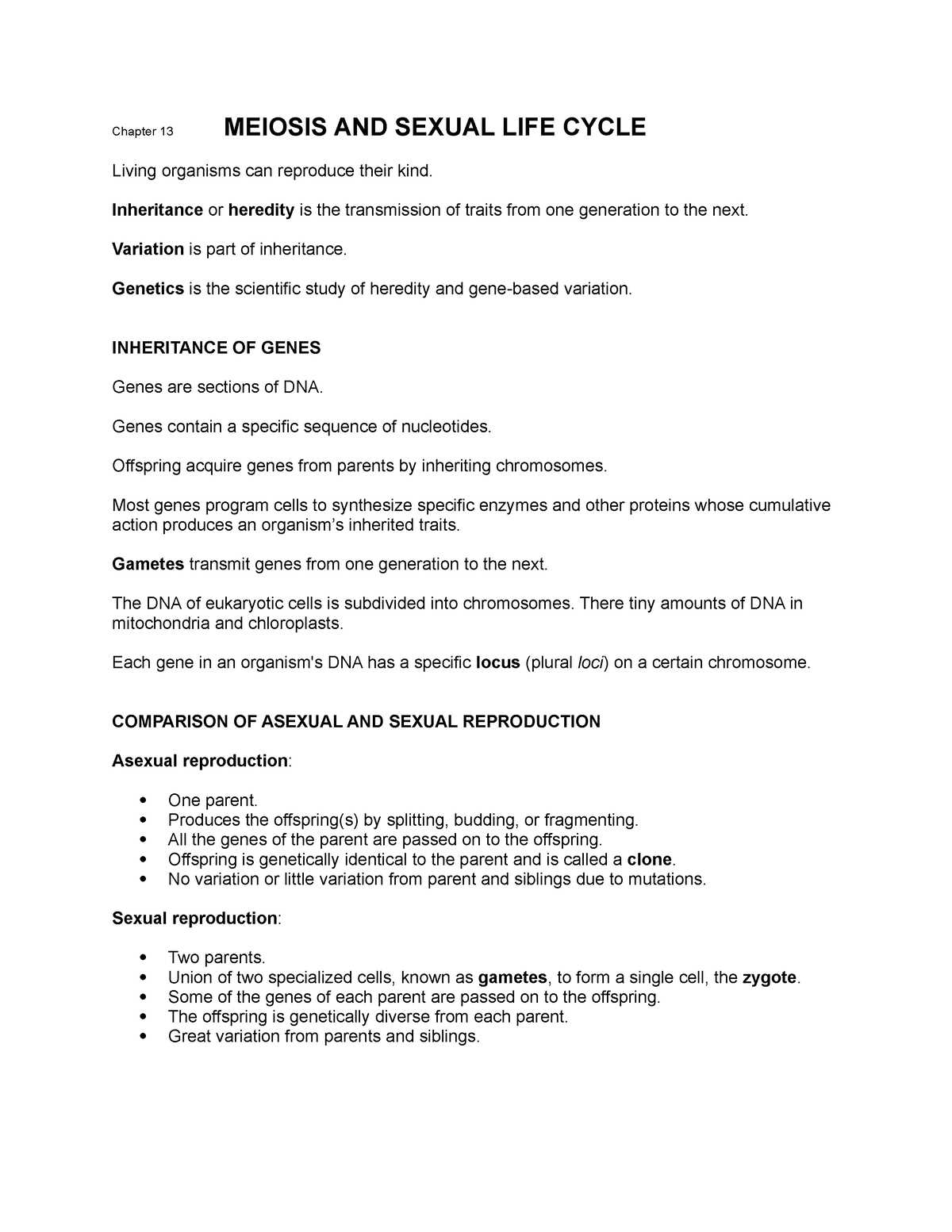
As environmental pressures change, organisms with advantageous traits are more likely to thrive. The role of genetic recombination in creating new gene combinations allows populations to better adapt to new challenges. Over time, this process contributes to speciation and the development of new traits within species.
| Factor | Implication for Evolution |
|---|---|
| Genetic Recombination | Creates new combinations of genes, increasing diversity and adaptability. |
| Random Assortment | Random distribution of alleles leads to varied offspring, contributing to evolutionary change. |
| Mutation | Provides novel genetic material, introducing new traits that may enhance fitness. |
Ultimately, the processes that generate genetic diversity through cell division form the basis for evolutionary mechanisms that allow life to adapt, survive, and evolve over time. These genetic changes are the essence of how species evolve, diversify, and respond to environmental challenges.